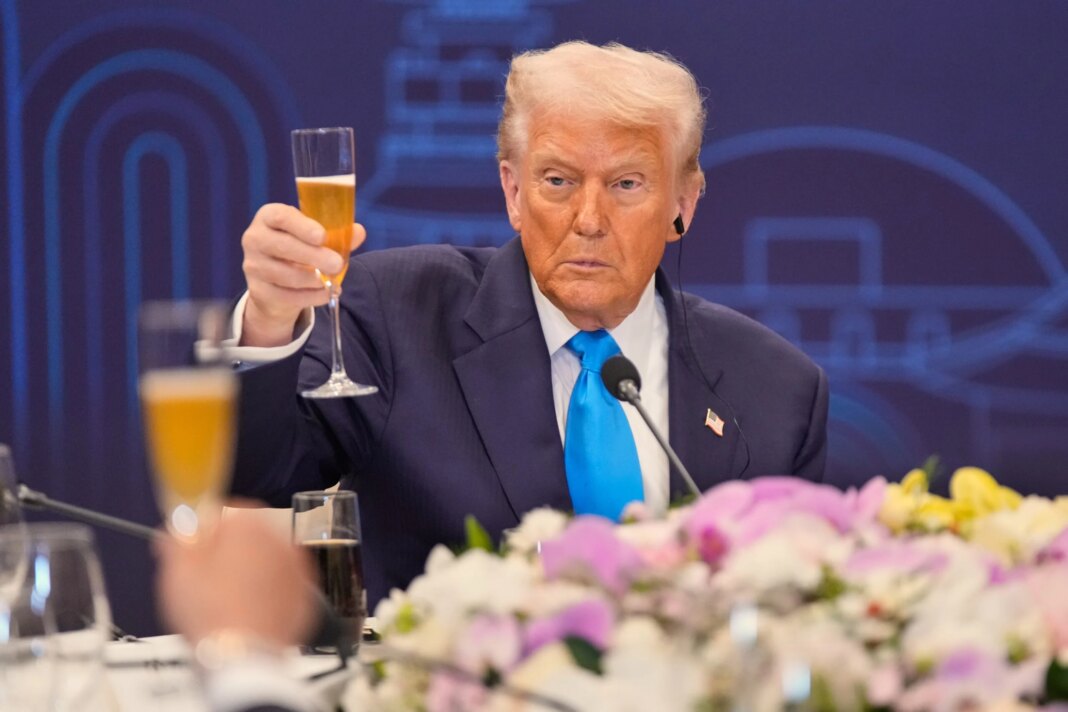Examining Trump’s Unconventional Approach to Government Shutdowns
Shifting Norms During Shutdowns
As the current government shutdown extends into its 29th day, President Donald Trump’s approach differs markedly from typical presidential behavior during such crises. Traditionally, presidents tend to scale back their public engagements, showing solidarity with the federal employees affected by furloughs. In previous shutdowns, staff deemed “non-essential” would be sent home, leading to a more somber atmosphere in the West Wing. However, Trump is choosing to continue with a full schedule, even engaging in fundraisers and international travel.
The Human Cost of Shutdowns
The ongoing shutdown has left approximately 750,000 federal employees furloughed, with many others required to work without pay. As essential services, including the Supplemental Nutrition Assistance Program (SNAP), face funding lapses, the situation underscores the real and pressing impact on American families. While previous administrations sought to demonstrate sensitivity to these disruptions, Trump appears to be adopting a business-as-usual attitude.
Golf, Fundraisers, and International Engagement
Notably, Trump is currently on a six-day trip through Asia, juxtaposing his international engagements against the backdrop of the shutdown. His itinerary includes hosting high-profile fundraisers, one of which even showcased the White House’s refurbished ballroom. Cabinet members have also kept busy with various travel plans, a stark departure from the typical austerity that accompanies a government closure.
Staffing Decisions and Their Implications
Unlike more stringent responses in past shutdowns, where a majority of White House staff were furloughed, only a fraction (32%) of the Executive Office of the President is affected this time. Many essential workers, such as housekeepers and ushers, remain on duty. This strategy raises questions about the symbolism of a government shutdown and how visible its effects should be to the American public.
The Political Calculus Behind Current Strategies
Trump’s choice to maintain a regular schedule may provide him with a political advantage. His administration has shifted blame away from the White House, creating a narrative that portrays him as unscathed by the shutdown. Political strategist Marc Short emphasizes that this approach allows Trump to appear presidential and avoid being embroiled in congressional disputes that often accompany shutdowns.
Comparative Historical Context
In contrast to his first term, where he appeared to embrace the narrative of the shutdown, this time Trump’s team has refrained from claiming ownership of the situation. Historical parallels exist with former President Bill Clinton’s approach during his shutdowns, where he effectively countered Republican blame. Political dynamics of the past provide insights into current strategies, suggesting that a strong stance against perceived bullying can yield favorable public opinion.
Public Perception of Responsibility
Polling data indicates a divided public, with many attributing significant blame to Trump and congressional Republicans while simultaneously holding Democrats accountable. This dualistic blame scenario complicates the political landscape, making it difficult to discern clear winners or losers in the shutdown debate. The murkiness of public sentiment adds complexity to the ongoing negotiation dynamics.
Ongoing Communication from the White House
Despite the chaos that a shutdown typically evokes, the Trump administration is framing its narrative around continued work and commitment to the American people. White House spokesperson Abigail Jackson asserts that the president is tirelessly advocating for federal workers and families adversely affected by the shutdown, indicating an active strategy to steer public sentiment.
Future Implications on Legislative Proceedings
With upcoming elections in Virginia and New Jersey—both states with significant federal employee populations—the political stakes are high. The administration’s response and public perception of the shutdown could have lasting ramifications that may influence legislative agendas and party dynamics. As Trump seeks to leverage the situation to redirect funds and strategic priorities, the long-term implications for government operations remain an essential aspect of the dialogue surrounding shutdowns.
This ongoing period not only reflects Trump’s unique governance style but also highlights the intricate relationship between politics, public perception, and policy within the broader context of American governance.



